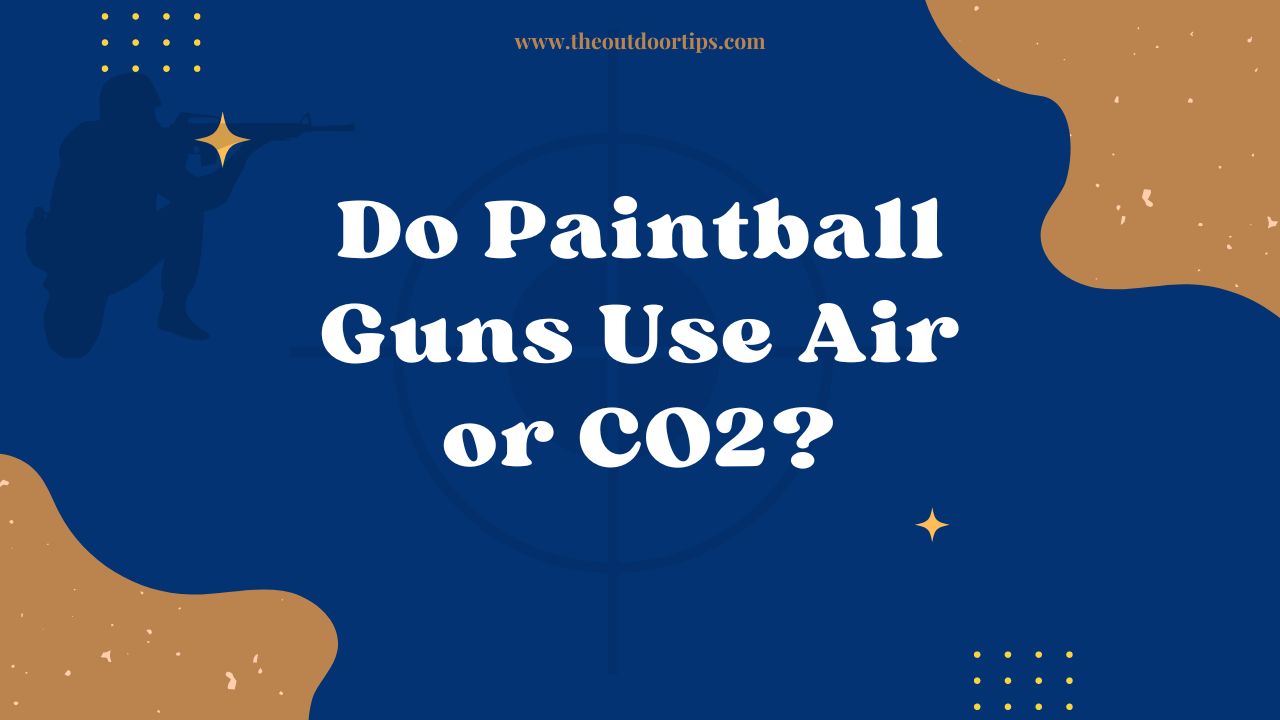Paintball’s heart-pounding action relies on the precise mechanics of paintball markers, commonly known as paintball guns. One critical factor influencing their performance is the propellant used to launch paintballs. Compressed air and CO2 are the two primary choices, each with its unique characteristics and considerations. This comprehensive article delves into the inner workings of paintball markers, exploring the differences between compressed air and CO2 as propellants. By understanding the advantages, challenges, and implications of each option, you’ll be better equipped to make an informed decision about the propellant that suits your playstyle and marker preferences.

Do Paintball Guns Use Air or CO2?
Short Answer: Paintball guns can use either compressed air or CO2 as propellants. While both options have their merits, compressed air (high-pressure air or HPA) is increasingly favored due to its consistency, accuracy, and safety. CO2 is still utilized but comes with temperature-related challenges that can impact performance.
Exploring Compressed Air: A Preferred Propellant
High-Pressure Air (HPA):
High-pressure air, or HPA, is compressed air stored in a tank at high pressures, typically ranging from 3000 to 4500 psi. This propellant is favored for its consistency and reliability, offering several advantages:
- Consistent Performance: HPA delivers consistent pressure and velocity, resulting in predictable shot trajectories and enhanced accuracy.
- Minimal Temperature Impact: Unlike CO2, HPA is not affected by temperature fluctuations, making it ideal for various weather conditions.
- Safety: HPA is generally considered safer due to its stability and reduced risk of pressure-related issues.
CO2 as a Propellant: Considerations and Limitations
How CO2 Works:
CO2 (carbon dioxide) is stored in liquid form within a CO2 tank. Upon release, it expands into gas, propelling the paintball. While CO2 was historically a popular choice, several limitations have led to its reduced usage:
- Temperature Sensitivity: CO2 performance is influenced by temperature changes. Cold temperatures can cause pressure inconsistencies and impact shot accuracy.
- Inconsistent Pressure: As the CO2 tank empties, pressure can become less stable, affecting shot consistency and accuracy.
- Maintenance Challenges: CO2 can cause marker components to freeze, requiring careful maintenance to prevent damage.
Key Considerations When Choosing a Propellant
Marker Compatibility:
Ensure that your paintball marker is compatible with the chosen propellant. Some markers are designed specifically for HPA, while others can accommodate both HPA and CO2.
Performance Requirements:
Consider your performance expectations. If you prioritize accuracy and consistency, HPA might be the preferred choice. If you’re playing casually and temperature variations are minimal, CO2 could suffice.
Environmental Factors:
Evaluate the climate conditions in which you’ll be playing. HPA’s resistance to temperature fluctuations makes it a more reliable option in various weather scenarios.
Budget:
HPA tanks tend to have a higher upfront cost, but they offer long-term savings due to their reusability and consistent performance. CO2 tanks are more affordable but may require frequent refills.
Maintenance:
HPA tanks are generally low-maintenance, while CO2 tanks require more attention to prevent freezing and potential marker damage.
Choosing the Ideal Propellant for Your Playstyle
Competitive Play:
For players seeking optimal accuracy and consistency, HPA is often the preferred choice. Its predictable performance enhances competitive gameplay.
Recreational Play:
CO2 can be suitable for casual play where temperature fluctuations are minimal. It’s budget-friendly and can provide adequate performance for recreational scenarios.
Scenario and MilSim Play:
In scenarios where realism is valued, HPA’s consistent shot trajectories and reliable performance align well with the tactical nature of scenario and milsim games.
Final thought:
The choice between compressed air (HPA) and CO2 as a propellant for paintball markers ultimately depends on your priorities, playstyle, and marker compatibility. While CO2 was once the go-to option, the increasing popularity of HPA is a testament to its consistent performance and minimal temperature impact. Whether you prioritize accuracy, budget-friendliness, or tactical realism, understanding the advantages and limitations of each propellant empowers you to make an informed decision that maximizes your paintball experience.
